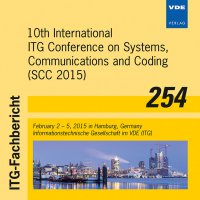Interference Channels with Limited Feedback: Is Topological Interference Management the Best Solution?
Conference: SCC 2015 - 10th International ITG Conference on Systems, Communications and Coding
02/02/2015 - 02/05/2015 at Hamburg, Germany
Proceedings: SCC 2015
Pages: 6Language: englishTyp: PDF
Personal VDE Members are entitled to a 10% discount on this title
Authors:
Chaaban, Anas; Sezgin, Aydin (Institute of Digital Communication Systems, Ruhr-University Bochum (RUB), Germany)
Abstract:
Topological interference management (TIM) is considered as a practical approach to overcome the need for high-resolution channel-state information (CSI) feedback of a transmission scheme. Essentially, in TIM, transmitters manage interference by adapting their transmission to the network topology, provided by binary (strong/weak) CSI feedback about the undesired (interference) channels, and perfect CSI feedback about the desired (direct) channels. Under this feedback configuration, TIM leads to a constant-gap capacity approximation. However, no claim of optimality of using the feedback in this manner has been made, and thus it is interesting to address this point. In this paper, we propose an alternative way to exploit the same amount of feedback which outperforms TIM in a 3- user interference channel. The main idea is to shift the schemeadaptation process from the transmitters (as in TIM) to the receivers, making use of their abundant CSI. We replace the feedback of TIM with scheme-index feedback indicating the best scheme among a pre-defined set of schemes, and achievable-rate feedback indicating the achievable-rate for the given channelstate. This combination outperforms TIM, and indicates that contrary to the unlimited feedback case, it might not be best to feedback CSI to the transmitters in the limited feedback case.


